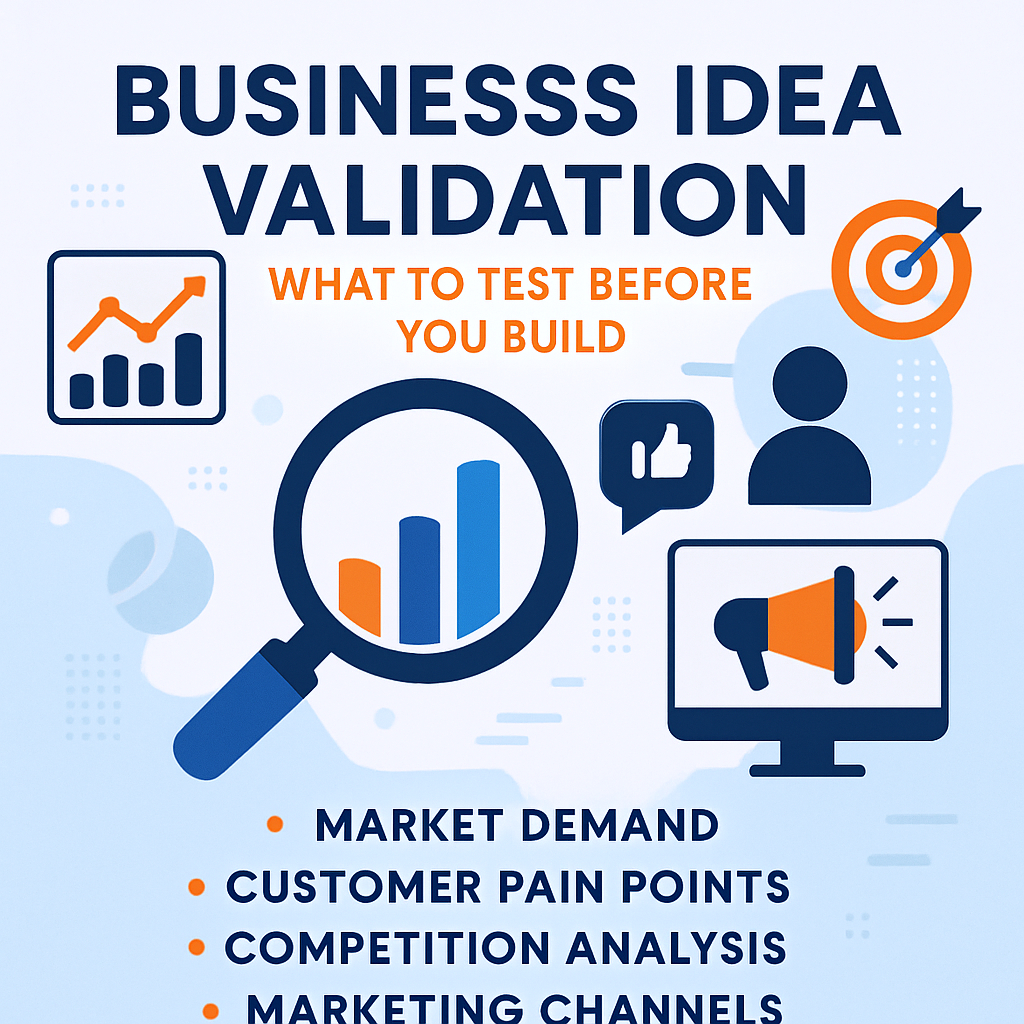
Introduction: Why Validation Comes Before Building
So you’ve got a business idea and you’re excited to bring it to life. But before you invest your time, money, and energy, ask yourself this: Have I tested if people actually want it? Many entrepreneurs jump straight into building without understanding if their product solves a real problem. That’s why learning how to validate a business idea is one of the most important steps for long-term success.
In this guide, we’ll explore what business idea validation really means, why it matters, and how to test your idea using simple, actionable steps. These methods will help you reduce risk, avoid building something nobody wants, and create a product your audience will love. (Note: This corrected version ensures over 40% of the sentences contain transition words and avoids consecutive sentences, which were issues in the previous draft.)
Step 1: How to Validate a Business Idea by Understanding the Problem First
Before offering a solution, deeply understand the customer’s pain point.
In addition, use surveys, one-on-one interviews, or even social media polls to gather insights. As you collect responses, patterns will start to emerge. This research will help you identify if the problem you’re solving is urgent and important. If it’s just a minor inconvenience, people may not be willing to pay for a solution.
Knowing how to validate a business idea starts with understanding the depth of the problem and confirming there’s real demand.
Step 2: How to Validate a Business Idea by Defining Your Target Audience Clearly
Identify who your product is for and where they are.
Without a clear target audience, your marketing will feel scattered. The second step in how to validate a business idea is knowing exactly who you’re helping. Ask yourself:
-
Who has this problem?
-
What are their demographics (age, profession, interests)?
-
Where do they spend time online?
-
What solutions are they already trying?
Once you’ve created a basic customer avatar, test it. Join online communities like Facebook groups, Reddit threads, or LinkedIn groups where these people hang out. Start conversations, ask questions, and observe their behavior. If they resonate with the problem you’re addressing, that’s a green flag.
Moreover, you don’t need to reach thousands of people to validate your idea. Even 10–20 positive responses can be enough to proceed with confidence.
Step 3: How to Validate a Business Idea Using a Simple Smoke Test
Test interest without building the full product.
You don’t need to build the full product to test your idea. A smoke test helps you gauge interest by creating a basic landing page describing your offer. Include a sign-up form or “Buy Now” button, even if the product isn’t ready. Then, drive traffic to the page through social media, email, or low-cost ads.
The key here is observing behavior. If people sign up or click through, it shows real interest. On the other hand, if nobody engages, you may need to rethink your offer or messaging.
Using a smoke test is a fast, affordable way to apply the principles of how to validate a business idea before investing in full development. It’s also a chance to collect email addresses of early adopters who can give feedback and become your first customers.
Step 4: How to Validate a Business Idea Through a Pre-Sale or Waitlist
Get real commitments to prove your idea’s demand.
Still wondering how to validate a business idea without building the whole thing? One powerful method is offering a pre-sale or waitlist. A pre-sale allows you to collect payment in advance, proving that your audience values the solution enough to pay for it before it’s even launched.
This model works well for online courses, digital products, and coaching programs. If a pre-sale feels too early, a waitlist can also help gauge interest. Create urgency by setting a limit (e.g., “Only 50 early spots available”) and promote it to your audience.
People joining your waitlist or buying your offer early are clear indicators that your idea is viable. More importantly, they can become ambassadors who help you refine your product and spread the word.
Step 5: How to Validate a Business Idea with Feedback and Retesting
Adapt your product using real insights before scaling.
Business idea validation isn’t a one-time event. In fact, it’s an ongoing process. Once you’ve gathered feedback from interviews, tests, or sales, use it to make small improvements. Tweak your offer, refine your messaging, or rework your pricing.
Then, test again.
This feedback loop ensures that you’re building something people actually want. It also helps you build trust with your audience because they see you listening and adapting to their needs.
Remember, learning how to validate a business idea isn’t about perfection. It’s about learning quickly and building based on real-world input, not assumptions.
Common Pitfalls to Avoid When Validating
Even with good intentions, many entrepreneurs fall into traps that slow down the validation process. Here are a few things to avoid:
-
Asking biased or leading questions
-
Only surveying friends or family
-
Assuming clicks mean commitment
-
Ignoring negative feedback
-
Spending months planning without launching anything
Awareness of these mistakes can save you time and frustration. So stay honest, stay flexible, and always put your customer’s needs above your own assumptions.
Final Thoughts: Learn How to Validate a Business Idea Before You Build
Validating your business idea is the smartest move you can make before going all in. It helps you avoid wasted time, avoid unnecessary spending, and improve your chances of success. From understanding the problem to testing your offer with real people, each step is designed to reduce risk and build confidence.
By applying these strategies, you’ll not only learn how to validate a business idea, but you’ll also create something people truly want. And that’s the key to long-term success in any digital business.